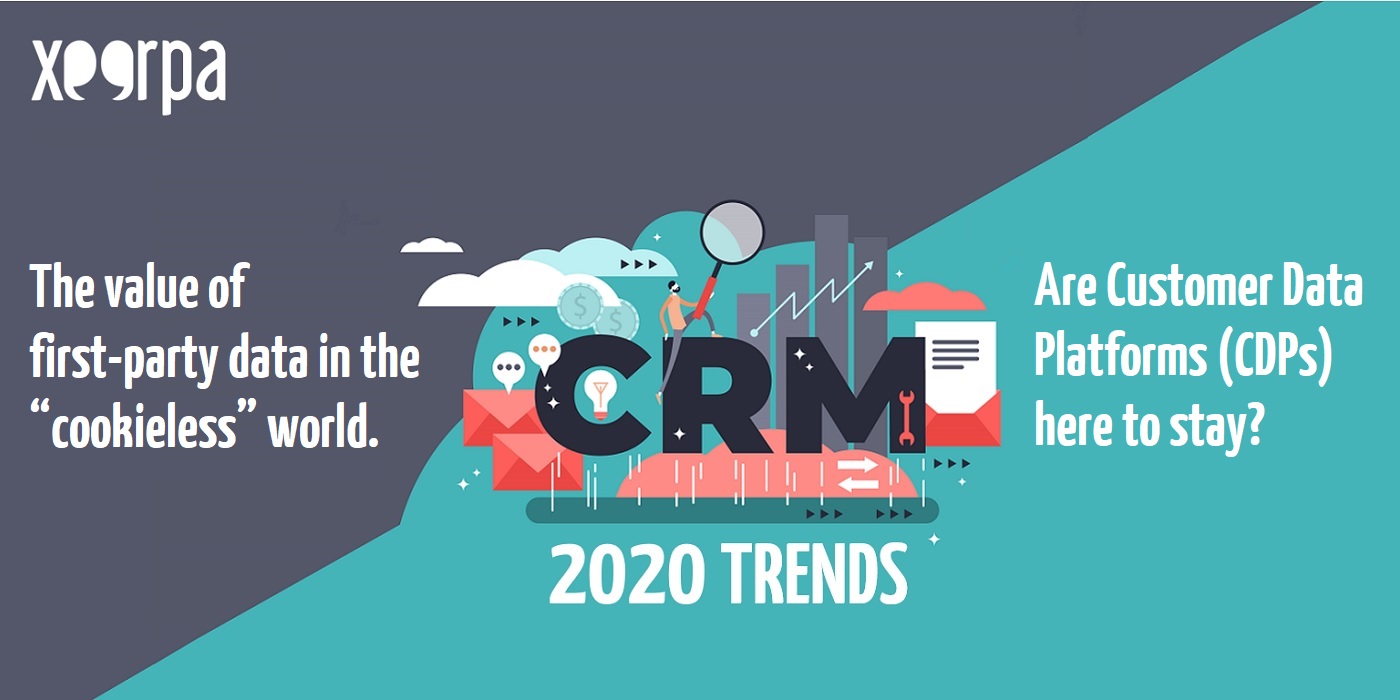Back in the 2000, 20 years ago, companies relied on one or two ways to contact their customers (brick & mortar stores; Customer Call Center). Traditional CRM gave us a way to manage those customers. In the following decade (2010), many more channels emerged through digital media (web sites, apps, social media networks,…) adding a layer of complexity in the Customer Journey, but also providing marketeers with new ways to communicate in order to achieve a better services and great activation tools for marketing campaigns. What will happen in this decade? In this post we analyze the major data-centric marketing trends and the key focus for CRM 2020.
According to Salesforce , businesses use an average of 15 sources of customer data, and that number keeps growing. Voice assistants, connected devices, wearables, chatbots… will be the new point of contact channels between companies and their customers. In this scenario, it is imperative to use flexible technology to connect and, most important, orchestrate, all the channels to offer a super customised client experience.
Watch our Webinar with Salesforce about 360º profiling and activating audiences (Spanish).
Customising as the focus of the competitive challenge, and the vital role of First Party Data
A few days ago, Google announced that it will limit the use of Third-party cookies on Chrome, the most used browser, just like Safari and Firefox do it. It does without saying that in the “cookieless” world knowing your customers as named individuals with an identity will be the basis of marketing strategies.
Collecting and managing First Party Data will be at the core of businesses. That will be the main competitive challenge in the nearest future. Customers will increasingly demand customisation and coherence in the conversations, regardless of the medium they are using. Even online publicity will become the new element of the multi-channel journey thanks to the adoption of DMPs. We are moving towards a super customised world based on detailed knowledge of customers profile.
Is CRM 2020 sufficient? The rise of CDPs
New voices are raising doubts if the current CRM platforms are ready for this new scenario. In this manifesto, independent technology leaders proclaim that most of the CRM 2020 suites are not flexible enough to adapt to the new environment.
The reality is that the emerging alternative thechnologies are focused on giving a range of services to marketing departments. These are open to integration with other tools with high intelligence and automation potential geared towards activation. We are talking about CDPs (Customer Data Platforms) that are evolving without the obligation of catering to other departments besides marketing.
Are CDPs here to stay? Only time will tell. Data activation will be the challenge for the next few years. We should assume that an up-to-date company has already resolved the issue of collecting and analysing data. Data activation, the act of monetizing First Party Data, is a pending issue. The technological model that will manage to give the expected return-on-investment will be the one to stay.
Creating Value for Customers through the use of customisation.
2018 was the year of GDPR, that arrived like a tsunami and marking the consciousness of the whole industry. It is not only a legal question. We have assimilated that users control the data, which means that we need to earn their trust and work hard to increase the Value for Customers through personalization of our products and services. Nothing markets better than giving power to the customer.
If with all this amount of First Party Data, intelligence and automation, in the next few years we’ll be able to generate value for customers and a return-on-investment for businesses, the Data professionals will undoubtfully be placed at the center of organizations.


